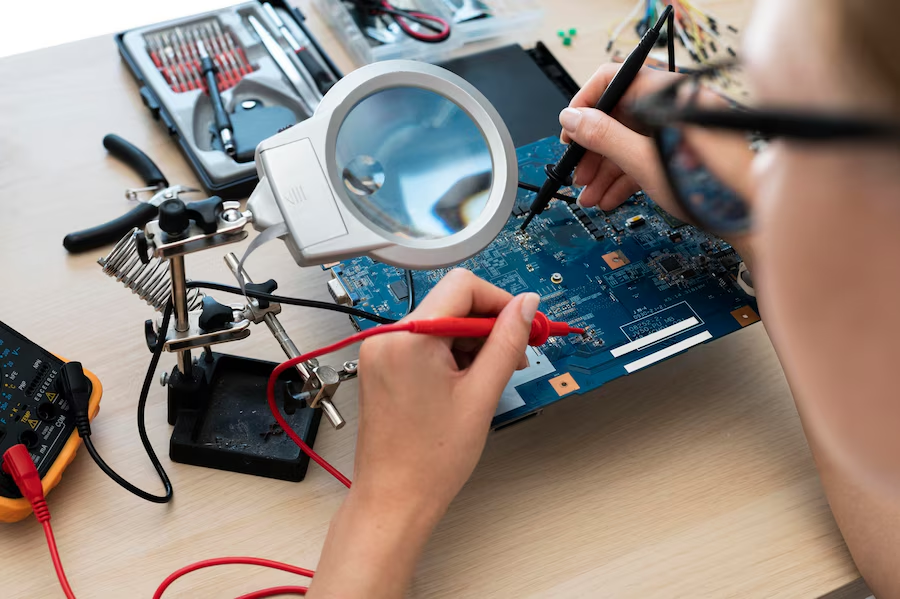Common Laptop Problems and How to Solve Them: A Step-by-Step Guide
- UK Business Insights
- Oct 3, 2024
- 4 min read
In today's digital age, laptops have become indispensable tools for work, education, and entertainment. However, like any technology, they can encounter issues that disrupt our daily lives. Whether you're working from home or attending online classes, understanding common laptop problems and how to solve them can save you time and money. This guide will take you through some of the most frequent laptop issues and offer step-by-step solutions, while also touching on related services such as mobile phone repairs and console repairs.
1. Laptop Won't Turn On
One of the most frustrating problems is when your laptop refuses to power up. Here’s how to troubleshoot:
Step 1: Check the Power Source
Ensure your laptop is plugged in and the power socket is functioning. Try using a different outlet or power cable if available.
Step 2: Remove External Devices
Disconnect all external devices, including USB drives, external keyboards, and mice. Sometimes, peripherals can cause power issues.
Step 3: Perform a Hard Reset
Remove the battery (if applicable) and unplug the laptop. Press and hold the power button for 15 seconds, then reconnect the power and try turning it on again.
If the laptop still doesn't turn on, it may require professional laptop repairs. A qualified technician can diagnose potential hardware issues, such as a faulty motherboard or power supply.
2. Overheating
Overheating can lead to performance issues and even permanent damage. To keep your laptop running cool, follow these steps:
Step 1: Clean the Vents
Dust and debris can block airflow. Use a can of compressed air to blow out any dust from the vents and fans.
Step 2: Use a Cooling Pad
Consider investing in a cooling pad to help regulate temperature during heavy usage, especially when gaming or running demanding applications.
Step 3: Monitor Background Processes
Open the Task Manager (Ctrl + Shift + Esc) and close any unnecessary applications that may be consuming CPU resources and generating heat.
If overheating persists, consult a technician for further laptop repairs or consider professional cleaning services.
3. Slow Performance
A sluggish laptop can be incredibly frustrating. Here are some steps to boost performance:
Step 1: Disable Startup Programs
Access the Task Manager and disable unnecessary programs from starting up with your laptop.
Step 2: Check for Malware
Run a full system scan using your preferred antivirus software. Malware can significantly slow down your laptop.
Step 3: Upgrade RAM or Storage
If your laptop supports it, consider upgrading the RAM or switching to a Solid State Drive (SSD) for faster performance.
If these steps don't improve performance, it may be time to look into professional laptop repairs for hardware upgrades.
4. Battery Issues
A laptop battery that drains quickly or won't charge can be a significant inconvenience. Here's how to address battery problems:
Step 1: Check Power Settings
Go to your power settings and ensure that your laptop is set to a power-saving mode.
Step 2: Calibrate the Battery
Fully charge your laptop, then let it drain completely before charging it again. This can help recalibrate the battery.
Step 3: Replace the Battery
If your laptop is older or the battery is swollen, it may need replacement. Consult with a professional for laptop repairs to ensure proper installation.
5. Screen Issues
Screen problems, such as flickering or blank displays, can hinder productivity. Follow these steps:
Step 1: Check Connections
If you’re using an external monitor, ensure all connections are secure. For laptops, try connecting to an external display to determine if the issue lies with the screen.
Step 2: Update Graphics Drivers
Outdated drivers can cause display issues. Check the manufacturer's website for the latest graphics driver updates.
Step 3: Hardware Inspection
If problems persist, it may be a hardware issue. Seek laptop repairs to address potential display or graphics card malfunctions.
6. Wi-Fi Connectivity Problems
Wi-Fi issues can disrupt work or leisure activities. Here's how to troubleshoot:
Step 1: Restart Your Router
Sometimes, the problem lies with your internet connection. Restart your router to refresh the connection.
Step 2: Forget and Reconnect
On your laptop, forget the Wi-Fi network and reconnect. This can resolve issues related to saved credentials.
Step 3: Update Network Drivers
Ensure your network drivers are up to date. Visit the manufacturer’s website to download the latest versions.
If connectivity problems continue, consider consulting an electrical contractor who can assist with network setup and connectivity solutions.
7. Keyboard Issues
A malfunctioning keyboard can severely impact your workflow. Here's how to fix it:
Step 1: Clean the Keyboard
Dust and debris can cause keys to stick. Use compressed air to clean between the keys.
Step 2: Check Keyboard Settings
Ensure your keyboard settings haven’t been changed accidentally in the control panel.
Step 3: External Keyboard Test
Connect an external keyboard to see if the problem persists. If it works, your laptop's keyboard may need repair or replacement.
Conclusion
Laptops are vital tools that require regular maintenance and occasional repairs. From issues like overheating to battery problems, understanding these common challenges and how to solve them can save you from frustration. While many problems can be tackled at home, some issues may require professional help. Remember, laptop repairs are often quicker and more cost-effective than replacing your device. And if you have related devices like mobile phones or gaming consoles that need repairs, don’t hesitate to seek professional services to keep all your technology running smoothly.

Comments